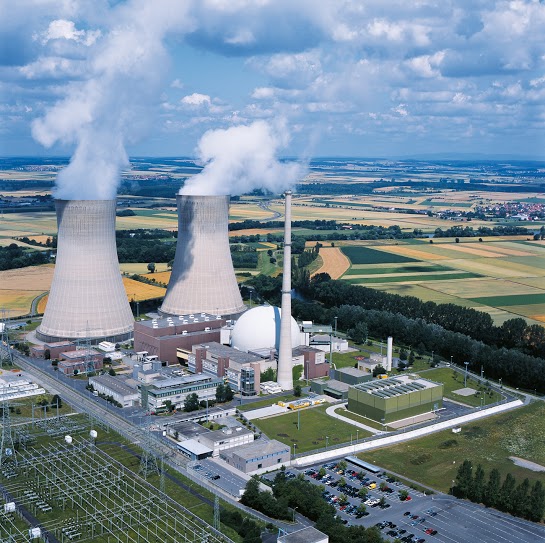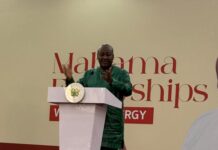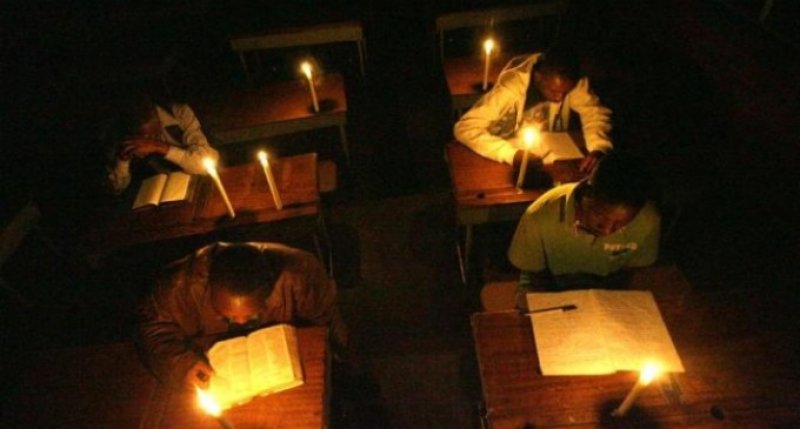
The 25th July 2015 did not turn out to be a beautiful summer’s day for all Germans. In the south the sun shone, while in the north Hurricane Zeljko reared its ugly head. What made it a jubilant day despite everything was the turnaround that was achieved in Germany’s energy policy. On that day 78 percent of Germany’s electricity needs were covered by renewable energy sources – more than ever before.
In the north the hurricane brought the wind turbines on the coast into full swing, in the south the sun had the solar cells blazing. At their peak the renewable energies delivered an output of almost 48 gigawatts. Not even 50 coal-fired power stations can achieve this without taking strain.
The turnaround in Germany’s energy policy is taking place relentlessly. Barely a month earlier, at exactly a minute before midnight in the night of 27th to 28th June, Bavaria’s Grafenrheinfeld Nuclear Power Plant was taken off the grid. Permanently. The reactor had been operational for 33 years and purely from a technical perspective the plant could have continued to produce electricity for a further two decades.
But it turned out that the plant was next in line to having to succumb to the political decision by Chancellor Angela Merkel to withdraw from nuclear power completely. “We have been promoting withdrawing from deadly nuclear technology for decades now. The ultimate switch-off is a success story and cause for jubilation,” rejoiced Hubert Weiger, Chairman of the German Society for Nature
Conservation and the German branch of “Friends of the Earth”.
Germany is proof that even one of the world’s biggest national economies can master the transition to renewable energy sources. However, Germany is also providing an example of how complicated and complex energy transition can be. The costs can get out of hand and the networks reach load limits.
Wind and solar power, biomass and hydropower: in 2014 Germany was already covering 28 percent of its electricity needs from renewable sources. The goal of the Federal Government to drive this up to 35 percent by 2020 is therefore an entirely achievable vision. In 2000, when the German Renewable Energies Act (EEG) was introduced and energy transition began, it did not even constitute seven percent.
The EEG represented a boom for wind and solar energy, for it guaranteed everybody who invested in alternative electricity generation a fixed compensation for every kilowatt hour of “green” electricity, which would more than cover the costs. Not only did electricity suppliers build wind turbines on a large scale; private households also installed solar facilities.
Germany can still manage the boom in wind and solar energy. If one were to convert local power outages to spread across all electricity consumers, the average outage period of interruption in 2014 would have been as little as 12.28 minutes. “The reliability of electricity supply in Germany compared to other European countries continues to remain on a very high level,” emphasises Jochen Homann, the president of the Federal Network Agency responsible for the energy networks. In comparison: In Great Britain it is more than 80 minutes on average, in France more than 100 and in Italy more than 150.
In reality there was a big fear of power blackouts when Germany accelerated its energy transition in 2011 after the Fukushima reactor catastrophe, taking eight of the 17 remaining nuclear reactors off the grid without delay. Chancellor Merkel has however sounded a strong warning: “We currently find ourselves in a critical phase where the proportion of renewable energies that were once a niche market have surfaced to becoming the central pillar of our energy supply.” There is one thing in particular that is causing her concern: Rising energy costs.
Energy transition is costing Germany a lot, with it having to go to great expense and effort to keep the electricity grid stable. The consumers are paying for it. The difference between the high compensation paid for “green” electricity and the electricity price, which forms in the wholesale trade, is being charged to the electricity users by the network operators.
With the rapid expansion in plants built, this EEG levy has accumulated: Every electricity customer must meanwhile transfer 6.17 cents in EEG levies for every kilowatt hour used – this is more than a quarter of the overall electricity price. Calculated across all electricity users this EEG levy amounts to 21.8 billion Euros for this year alone.
The grid operators also face great challenges due to the rapid expansion of wind and solar energy. In peak times renewable energy sources may already cover 70 per cent of demand, as was the case on 25th July.
On overcast winter days when the clouds obscure the sky and there is hardly any wind, the output can rapidly drop to a percentage that you can count on the fingers of one hand, as was the case on that fatal 25th July. The more that electricity availability is contingent upon weather conditions, the more difficult it becomes to avoid electricity outages. The grid operators are forced to redistribute the electricity. In southern Germany, where industry needs plenty of electricity, nuclear plants are going off the grid and entire offshore wind parks are developing along the northern coastline.
A total of 4000 kilometres of high-voltage power lines are expected to be installed in the coming years. Some 20 billion Euros will be needed for this. In order to distribute the electricity nationally, three large routes have been planned. The biggest of these, Südlink, crosses through Germany from north to south via an 800 kilometre stretch. Planning and construction could take almost a decade. Expansion is nevertheless held up: Local citizen initiatives are protesting against the new routes disrupting their neighbourhood. “2015 will be a decisive year when it comes to energy transition,” warns Hans-Jürgen Brick, the CEO of the large Amprion network.
“If grid expansion is not accelerated then energy transition will come to a standstill.”
The Federal Government is at great pains to turn the project of energy transition into a success story. With constantly new legislation and regulations it is trying to map out a new pathway for the energy market. In the past year the renewable energy law was reformed. EEG 2.0 means that compensation will be reduced and the unrestrained expansion of renewable energies controlled.
Now the Federal Government is working towards protecting the gas power stations which are being forced out of the market due to sinking wholesale electricity prices because of the boom in wind and solar energy, while filthy coal plants remain on the grid. Aside from all this there is one particularly large problem that must be resolved: How is the dismantling and safe waste disposal of nuclear plants being controlled? Energy transition in Germany is on the right path, however still a long way from completion.
By Jürgen Flauger























